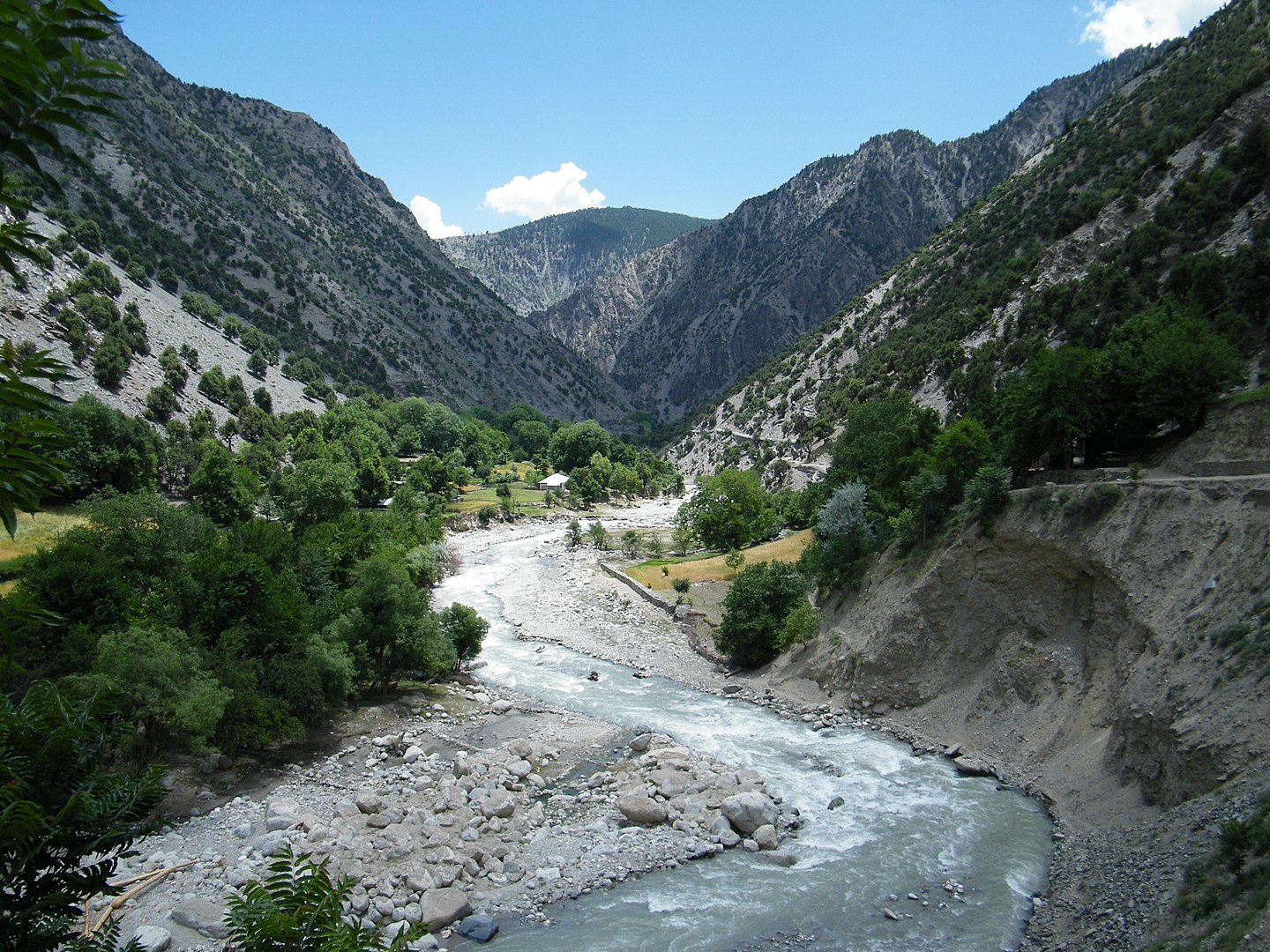The Last Infidels of Hindu Kush

By Manzoor Ali
Staff Writer
23/7/2020

Kalash girls in traditional dress
In an enclave of three remote valleys surrounded by the Hindu Kush mountains of northwestern Pakistan live the Kalash people, a tiny minority of animists in a predominantly Muslim country.
Outsiders call them Siaposh Kafirs, or black-clad infidels, due to color of their attire, and the Birir, Rumbur, and Bumburet valleys in the Chitral district in which they reside is known as Kafiristan, the land of the infidels. Yet the Kalasha remain fiercely proud and independent. Claiming descent from the soldiers of Alexander the Great, they have observed their ancestral traditions for centuries.
The Kalash pantheon is rich and varied. There’s the creator god, Dezau. Balumain is the messenger between him and mortals, and grants the wishes of the faithful. Sajigor is the guardian of the land and the protector of herds. Mahandeo is the god of contracts, and Jestak is the goddess of family and children and presides over births and marriages. There are also a host of lesser beings – suchi (fairies) and bhut (demons) – who can help or harm humans.
Kalasha are called Pakistan’s most festive people. The spring festival, Joshi, the good harvest festival, Uchal, the autumn festival, Pul, and the winter festival, Chawmos, mark the cycles of the Kalash calendar. The Kalasha make their own kind of wine, and their festivals feature religious rituals, singing, and dancing, and draw visitors from all over the world.

Kalash girls at Joshi, the spring festival
For hundreds of years, the Kalasha have faced forced conversions, persecution, and marginalization at the hands of their Muslim-majority neighbors. (Despite their claims to Macedonian descent, some anthropologists think they descend from Indians who took refuge in the remote recesses of the Hindu Kush mountains to escape Muslim conquest in the 10th century.) A 2019 report by Pakistan’s National Commission of Human Rights noted that the advance of Islam and Muslim settlers into the Hindu Kush mountains from the 16th century gradually brought about the conversion of the Kalasha. In The Kafirs of the Hindu Kush, Victorian colonial official Sir George Scott Robertson noted that when he visited the village of Urtusan in southern Chitral in 1896, it comprised about 40 Kalash families. Less than a century later, the entire population of the village was Muslim. Kalasha also used to be found in Nuristan province in Afghanistan. At the turn of the 20th century, however, an Afghan ruler forcibly converted the last “infidel” tribes, known as the Red Kafirs, to Islam. Now, Kalasha are only found in those three valleys in Kafiristan.

Rumbur valley (Picture Credit: Majduddin)
Though they are no longer forcibly converted to Islam, today, the Kalasha number only some 3,800, and are on the brink of extinction. In 2018, an article in the Washington Post reported 300 conversions over the preceding three years. Kalash activists say there were 20 conversions in the first six months of this year. Cultural practices are changing too. Kalash women used to wear traditional headgear made of cowrie shells called kupus, and did not cover their bodies as Muslim women in Pakistan do. But today, more and more Kalash women are eschewing their traditional headgear, and are covering themselves with big shawls.
Many Kalash activists say their children are being indoctrinated into Islam at school, where they are forced to study it, and where they interact with Muslim children. Kalash people are also regarded as inferiors by their Muslim peers and neighbors, prompting many to convert to fit in. Most often, these converts are teenage girls, who adopt Islam after marrying Muslim men who either visit or live in their valley.
Most often, Kalash converts are teenage girls, who adopt Islam after marrying Muslim men.
In 2016, the conversion of a 14-year-old Kalash girl nearly sparked riots in Bumburet valley. After converting, she went to live with a Muslim family. Her irate parents took her back home. This infuriated their Muslim neighbors who marched on their house in the village’s Kalash quarter. In the end, the police had to disperse the mob with tear gas. The next day, the minor appeared before the media and announced that she was not forced to convert and embraced Islam of her own accord.
Ariana Azam and her sister are other young girls from Bumburet valley who converted. Ariana, who is in her 20s, became famous in 2018 after singing a Kalash song, “Pareek,” on Coke Studio, a Pakistani TV program. Her video garnered 3.3 million views on YouTube.
Earlier this year, however, she followed her ailing sister to a hospital in Islamabad, where she was being treated. There they stayed with a Muslim family, and later both of them converted to Islam. The reasons for their conversion are unclear, though Kalash activists claim the Muslim family is footing the hospital bill, and that this may have something to do with it.
Just a decade ago, the Kalash valleys, and Chitral itself, were remote, cut off from the rest of the country for half the year due to the closure of roads on account of heavy snowfall. However, the completion of the Lowari Tunnel, which connects Chitral with Dir district, has ended the region’s geographic isolation and opened it to a steady stream of tourists. Now, this once inaccessible region has become a favorite holiday destination in Pakistan. To cater to the growing numbers of tourists, many hotels and restaurants have opened up in Chitral; however, most of them are owned by deep-pocketed Muslim outsiders.
Rather than benefitting them, the tourist influx only seems to have increased pressure on the Kalash people. Food prices have risen as most of the produce now goes to hotels, which pay more. The Kalasha have become showpieces in a big human theme park.

Kalash men at a festival in Bumburet
“Although paraded and exhibited for decades, by Pakistan’s Government and media, as a well-preserved, happy, and hospitable indigenous stock of people,” observed Pakistan’s National Commission of Human Rights 2019 report, “the Kalash have rarely [come] under the microscope in terms of their socioeconomic problems. For decades, the Kalash made the headlines only for the celebration of their seasonal festivals, as if they had no life, needs and requirements except merry making and dancing. But recently, focus of the mainstream human rights discourse in Pakistan has shifted to the genuine problems of the Kalash after the realization that there may not be any indigenous culture left to celebrate due to the rapid conversions of the Kalash people to Islam and the increasing number of Muslim settlers in the valleys of Bumburate, Rambur, and Birir.”
“[T]here may not be any indigenous culture left to celebrate due to the rapid conversions of the Kalash people to Islam.”
“There is no light at the end of the tunnel for Kalash,” said Imran Kabir, a Kalash activist. Persecuted by Muslims for centuries, and squeezed by the forces of assimilation and modernity, the Kalasha inhabit a shrinking space. After hundreds of years, their time might finally be up.
